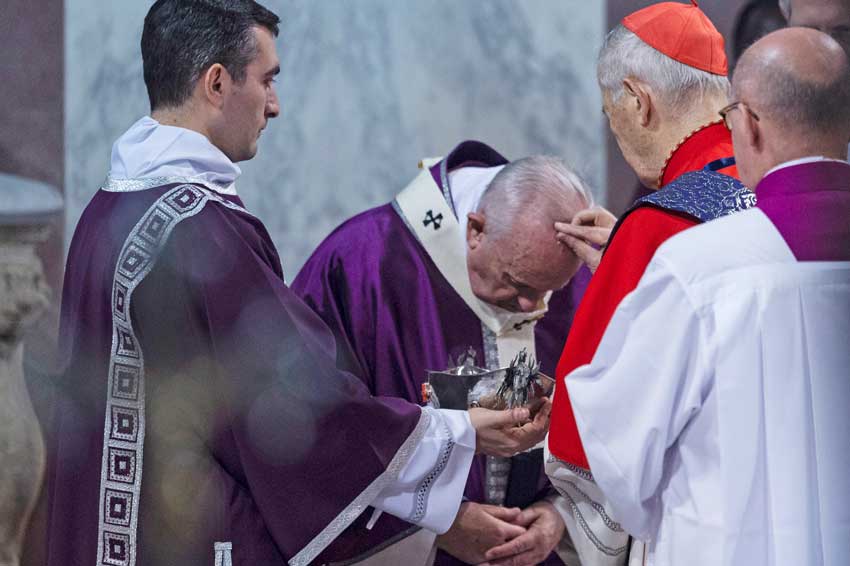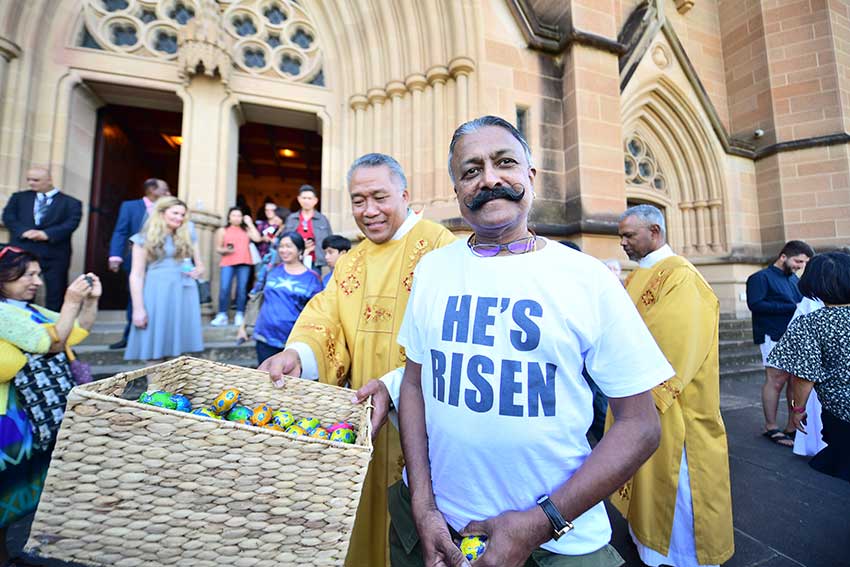It’s almost here: this week, Mark Shea begins an exclusive series for The Catholic Weekly on Lent.
In this first in the series, Mark asks, what is Lent for?
The gospel for Ash Wednesday comes to us straight out of the Jewish tradition in which Jesus was born and raised and which his Holy Spirit taught Israel to observe. Like the rest of Old Testament tradition, it is therefore something in which Christ is both hidden and, in light of his Resurrection, fully revealed.
This notion that Jesus is hidden in Scripture is not something invented by medievals reading the Bible as a sort of Rorshach blot in order to imagine “Jesus sightings” where none exist. The Risen Christ himself insists upon it:
“‘These are my words which I spoke to you, while I was still with you, that everything written about me in the law of Moses and the prophets and the psalms must be fulfilled.’ Then he opened their minds to understand the Scriptures, and said to them, ‘Thus it is written, that the Christ should suffer and on the third day rise from the dead, and that repentance and forgiveness of sins should be preached in his name to all nations, beginning from Jerusalem.’” (Luke 24:44-47)
The Tradition, stretching back to Jesus himself, is that the pious Jewish practices of prayer, fasting, and almsgiving are, then, not outmoded rigors imposed on believers by an imperious and authoritarian medieval Church that just likes to make people suffer, but that they are normative ways for human beings to open themselves to the life of the Spirit of the living God who loves them and who seeks to dwell with them as he dwelt in joy and love with his Son during his earthly sojourn.
Indeed, the point of Lent is not merely that we should experience this life as Jesus experienced it, but that we should prepare ourselves for the unthinkable, transformed, divinized, resurrected, and glorified life of Jesus as he still experiences it in his risen form at this very moment. Lent is not about preparation for Easter eggs, nice clothes, and maybe a ham on Sunday. It is about getting ready to experience the shock and awe of the literal Resurrection of the Son of God; raised, touched, beheld, poked, prodded, dined with, breathing upon his disciples, cooking fish, appearing, disappearing, and being seen with the mortal eyes of some five hundred eyewitnesses.

Lent is about readying our bodies, souls, and spirits to live in a world where the Son of God has taken our mortal flesh down into the grave, not to get rid of it and emerge as a spirit, but to raise it up glorious and transformed in an event that is to the New Creation what the Big Bang is to the Old Creation. In Christ’s Resurrection, God has already begun to transform, not just our bodies, but (in the end) the entire universe into what Scripture calls “the New Heaven and the New Earth” (Revelation 21:1).
In short, just as the Old Testament was always pointing to the coming of the Messiah, even when its human authors were not clear who that Messiah was or what he would do, so the pious practices of prayer, fasting, and almgiving were (and remain) preparation for the culmination of the Messiah’s work in the world that will be revealed on the Last Day, when the Risen Christ “will change our lowly body to be like his glorious body, by the power which enables him even to subject all things to himself” (Philippians 3:21).
Seen from this perspective, the disciplines of Lent are radically transformed. They stop being about embracing some sort of pointless hardship for hardship’s sake and become about training oneself in love and in transcendental hope for a literal New Creation.

The distance between the New Testament’s excited anticipation of this New Creation and our comfortable desire to find our place in this world thankyou very much may be seen by our horrified reaction to this early Christian expression of joy at the thought of a world sharing in the Resurrection of Jesus:
“Since all these things are thus to be dissolved, what sort of persons ought you to be in lives of holiness and godliness, waiting for and hastening the coming of the day of God, because of which the heavens will be kindled and dissolved, and the elements will melt with fire! But according to his promise we wait for new heavens and a new earth in which righteousness dwells.” (2 Peter 3:11-13)
Still and all, that is what the gospel is about—the transformation of the universe by the Risen Christ. And since prayer, fasting and almsgiving are that same Christ’s recommendations to get ready for it, we will look at them this Lent.
Of which more next time.
